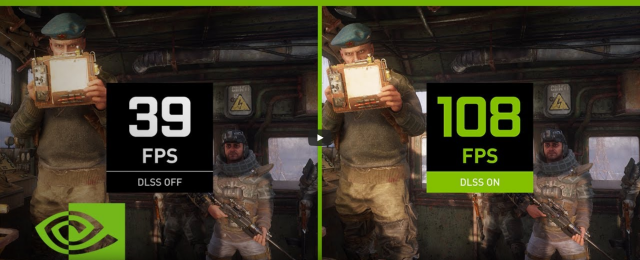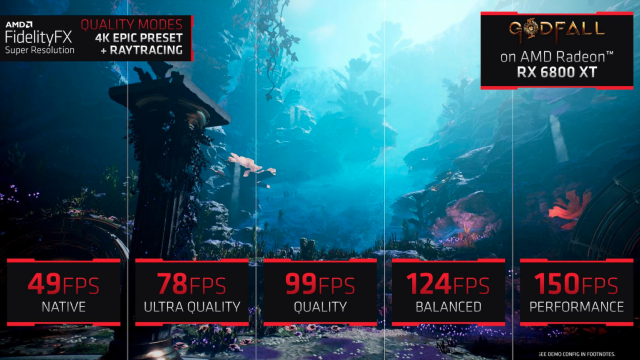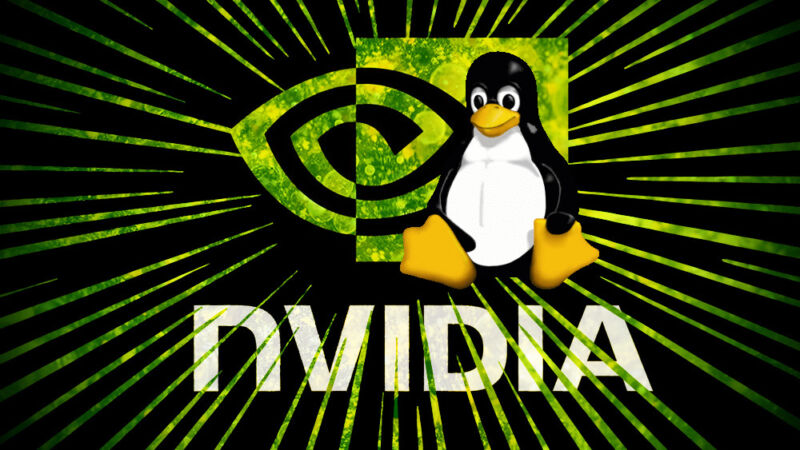Linux gamers, rejoice—we're getting Nvidia's Deep Learning Super Sampling on our favorite platform! But don't rejoice too hard; the new support only comes on a few games, and it's only on Windows versions of those games played via Proton.
At Computex 2021, Nvidia announced a collaboration with Valve to bring DLSS support to Windows games played on Linux systems. This is good news, since DLSS can radically improve frame rates without perceptibly altering graphics quality. Unfortunately, as of this month, fewer than 60 games support DLSS in the first place; of those, roughly half work reasonably well in Proton, with or without DLSS.
What’s a DLSS, anyway?

If you're not up on all the gaming graphics jargon, DLSS is an acronym for Deep Learning Super Sampling. Effectively, DLSS takes a low-resolution image and uses deep learning to upsample it to a higher resolution on the fly. The impact of DLSS can be astonishing in games that support the tech—in some cases more than doubling non-DLSS frame rates, usually with little or no visual impact.
Upsampling itself isn't a new technology; the difference lies in the deep learning. A trained neural network does a better job of identifying the portions of a frame most relevant to human perception than older, classical logic algorithms could—and it's even better at figuring out just how to redraw a janky, pixellated downsample into something the human eye expects to see.
Unfortunately, Nvidia DLSS is proprietary and requires special hardware in the newer Nvidia cards (RTX 2000 series and up). So far, Nvidia has not enabled the feature in its native Linux drivers—which are also proprietary.
AMD vs. Nvidia on Linux
On Windows, DLSS is one of several Nvidia features that makes a switch to Radeon graphics difficult to contemplate, even when the price is right and the card is powerful. On Linux, the tables are turned, and choosing Nvidia is a much tougher sell.
AMD famously open sourced its Radeon drivers for Linux in 2015, rebasing on a free and open source (FOSS) AMDGPU kernel module. This was more than just a politically correct move for the target audience—it drastically improved driver quality, turning Radeon graphics into the best high-performance GPU option on Linux.
Prior to AMD's open source drivers, Linux users had a challenging decision to make when building a new rig—they could either get "just works" simplicity and lack of bugs from Intel integrated graphics, or they could get much higher performance burdened with artifacts, screen tearing with video playback, and even outright system crashes. AMDGPU changed all that by marrying the openness and quality Intel GPUs offered with the performance of true consumer gaming cards.
Switching from Nvidia to AMD has, since at least 2019, been an incredible experience for a Linux gamer:
- drivers in distro repositories are up to date—no need to go download code directly from the vendor
- no proprietary code needed in kernelspace—so no tainted kernel and no silly UEFI tricks necessary to boot on Secure Boot systems
- screen tearing completely gone—videos are smooth in local video apps, as well as in-browser in either Chrome or Firefox
- no crashing, no artifacts, no weird bugs
- no conflicts between a vendor-written control panel and the distro's native display management tools
Even if DLSS was supported in all games, instead of only 50 or 60, we'd be hard-pressed to give all that up for a frame-rate bump.
AMD’s own DLSS-like tech is on the way, too

At Computex 2021, AMD announced its own version of AI-powered upsampling—which it's calling FidelityFX Super Resolution (FSR). We don't know much about how FSR works, other than the company hinting at AI under the hood—and letting us know that it's open source.
Interestingly, FSR can also run on Nvidia GPUs—even the ones that don't support Nvidia's own DLSS. AMD claims that FSR took Godfall on a GTX 1060-powered system from 27 fps to 38 fps—a 41 percent improvement.
Unfortunately, FSR is still just a promise for now—it doesn't launch until June 22, and there's no word whether it will be immediately available for Linux on launch day. We also don't have as many samples of before-and-after image quality as we'd like—if FSR can't hang with DLSS in terms of quality, it won't much matter if FSR meets or even beats its boost in raw frame rate.



3175x175(CURRENT).thumb.jpg.b05acc060982b36f5891ba728e6d953c.jpg)

Recommended Comments
There are no comments to display.
Join the conversation
You can post now and register later. If you have an account, sign in now to post with your account.
Note: Your post will require moderator approval before it will be visible.